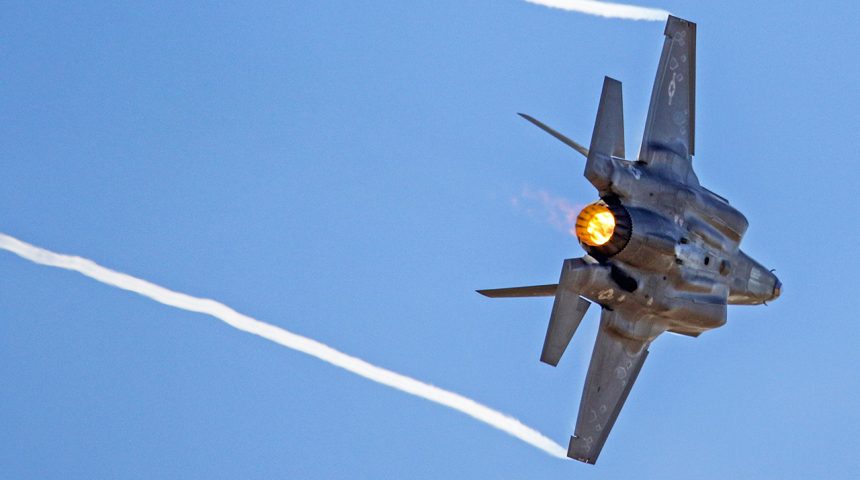Air Force Claims Mysterious “Boom” Wasn’t Them. Local News Suggests, “Earthquake or Mine Blast”.
Tucson, Arizona residents near Davis-Monthan Air Force Base and across the city of Tucson are reporting a loud “sonic boom” that happened at 10.44AM local time on Tuesday morning, Dec. 29, 2020.
According to a news report published on Tucson’s KOLD News 13, “People from across Tucson reported hearing a loud boom and the feeling the ground shake around 10:44 am Tuesday, December 29, 2020”.
When Tucson area residents were asked on Facebook if they heard anything, one source in the area told TheAviationist.com, “Hear it? My doors and windows shook like they were coming out of the frames. I was about to yell at the kids. It lasted a full 15 seconds. Hit at 10:44 am. The hanging planters on the back porch were still swinging ten minutes later. And there’s a catch, there was zero wind. It sounded like the house sounds when a dust devil hits it. We did have rain last night and the clouds are low. So, we have a nice reflective inversion layer to propagate air blast pressure waves. Didn’t feel it in the ‘ground’. Felt like only pressure.”
Confidential, unconfirmed reports to TheAviationist.com suggested the noise “might have been an F-35 out of Luke”, suggesting, but not verifying, that the loud noise may have been produced by a supersonic F-35 Lightning II flying from Luke AFB. There is no official media or military confirmation of this claim, and instances of military aircraft breaking the sound barrier over populated areas, which is against FAA and military regulations, are extremely rare.

On the other side, we have reported in the past about loud “booms” generated by fighter jets flying at very high altitude (during a Quick Reaction Alert mission) which propagated fast and could be heard from significant distance.
Local reports say the noise was heard, “as far north as Catalina Foothills High and as far south as Alvernon and Valencia”, which is a busy intersection in Tucson.
Tucson, Arizona is home to extensive military training installations including the massive Davis-Monthan AFB to the south of the city, the AMARG “Boneyard” storage facility adjacent to Davis-Monthan AFB and Tucson International Airport, which is a major training facility for international F-16 flight crews in addition to an active installation for Arizona Air National Guard F-16 units.
An official spokesman from Davis-Monthan AFB told KOLD News 13 that, “We are aware of the reported loud boom in Tucson this morning, but we did not have any aircraft capable of breaking the sound barrier flying at that time.”
Davis-Monthan AFB is home to a number of Air Force and Air Force Reserve units along with a large U.S. Customs and Border Patrol unit. The units at Davis-Monthan operate subsonic aircraft such as the A-10 Thunderbolt II ground attack aircraft, the EC-130 Compass Call electronic warfare aircraft and the HH-60G Pave Hawk rescue helicopter.

However, because of the large 309th Aerospace Maintenance and Regeneration Group (309th AMARG), often called “The Boneyard”, and the proximity of local training resources such as the nearby Barry Goldwater Range, it is common for unusual aircraft to visit Davis-Monthan AFB.
No seismic data has been recorded on the U.S. Geological Survey (USGS) website showing earthquake activity in the region during the time of the reported noise. Large subterranean explosions, such as mining activities south of Tucson, could produce a loud noise, but would also register on USGS seismic data. None have been reported in the area.
Davis-Monthan AFB does conduct occasional training and security exercises using live explosives, but these are carefully controlled and public notice of the operations are posted in advance to Davis-Monthan AFB social media and media outlets. No such notices appear for this morning.

While breaking the sound barrier over populated areas is prohibited, it has been known to happen in the Tucson area due to the high frequency of military flight operations and the proximity of active local training areas. In 2019, a series of mysterious, loud “booms” were heard between January and March in the Tucson area. When reporters from the local KOLD news 13 media outlet investigated the sounds, they reported that, “We never got a straight answer about the cause, but the shaking was strong enough to be picked up by a seismometer at the university of Geosciences Department [at the University of Arizona]”. Several people also caught the loud booms on video and posted the 2019 explosion sounds to social media.
In another 2017 incident, Luke AFB, north of Tucson near Phoenix, told local media that booms that were reported then “may have been caused by a training exercise”. In a separate 2013 incident, Luke AFB confirmed that an F-16 broke the sound barrier during a training exercise west of Tucson at 7:25 pm on February 28 northwest of Kitt Peak. The aircraft was from the 425th Fighter Squadron according to reports on KOLD News 13 at the time of the incident.










